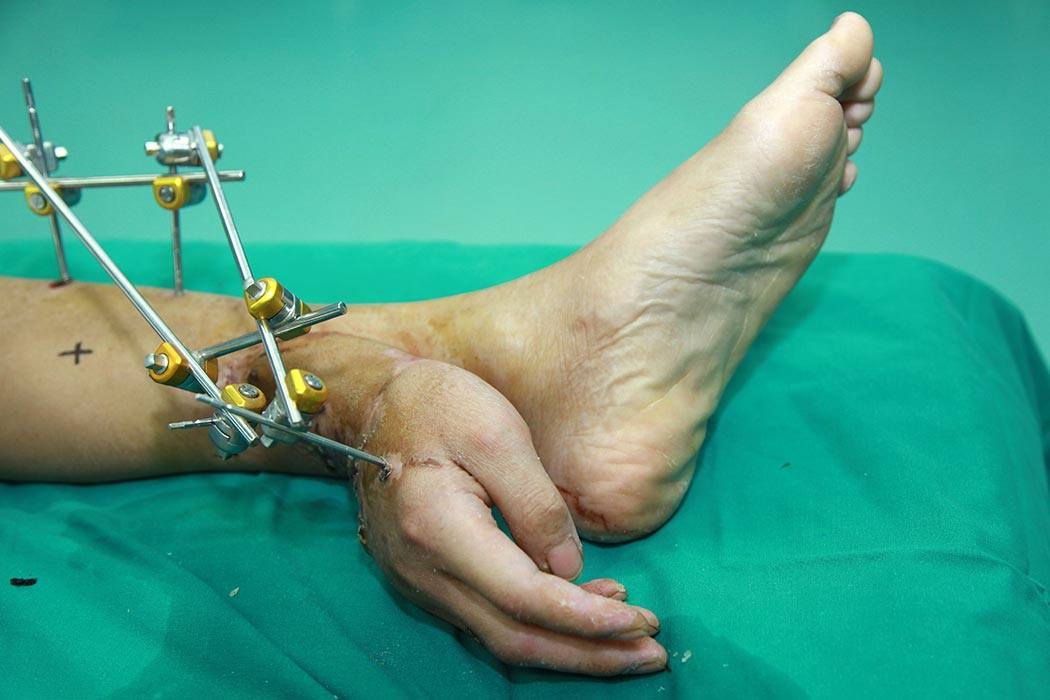Chinese doctors grafted a man’s hand to his leg in order to preserve it for reattachment. Following an accident, the man’s arm was too badly damaged to allow immediate reattachment of his severed hand. During what must have been a particularly awkward month for the patient, the hand was kept alive attached to his ankle until the arm healed. The technique is the latest development in the surprisingly short history of reattaching limbs.
China has long been a pioneer in this field; the first successful hand reattachment occurred there in 1963 . The late date is remarkable considering that the first successful organ transplants occurred much earlier. Doctors had successfully reattached a dog’s leg in 1902, but the procedure was not commonplace in humans until 1975. Why the difficulty?
A big part of the problem is the size of the blood vessels and nerves in the limbs. While the vessels in organs are relatively large, the extremities are also fed by very small vessels. All must be repaired, not just the large ones. The development of surgical microscopes eventually set the stage for successful repair of small vessels and restoration of function to a hand or foot. Preservation was, and is, another major concern. A 1975 article estimated that a limb remains viable for 4-6 hours; if wrapped in a bag and refrigerated, that time frame can be extended up to 18 hours.
Even now that the procedure is fairly routine, limb reattachment is still a major operation that requires a lot of time and specialized attention. Doctors still have to make choices about which cases to attempt. Younger patients, and those without other serious injuries, are the most promising. Crushing injuries are problematic due to the condition of the tissue at the injury site. The longer the limb is deprived of blood, the more difficult successful surgery becomes. In these instances, a severed limb can immediately have blood flow restored by using this new process while the rest of the situation is assessed.
A common thread in successful reattachment is the state of mind of the patient. The operation itself is grueling, followed by a lengthy and difficult rehabilitation program if full function is to be restored. It takes a lot of grit and perseverance to get through the process, so not everyone makes for a good candidate. Now, to the already great effort involved, add an indefinite period of time with a limb attached to a patient’s ankle (during which time the patient is hospitalized), and the recovery becomes a particularly daunting road. The new technique offers hope to a new category of patients, but it will not be easy.







